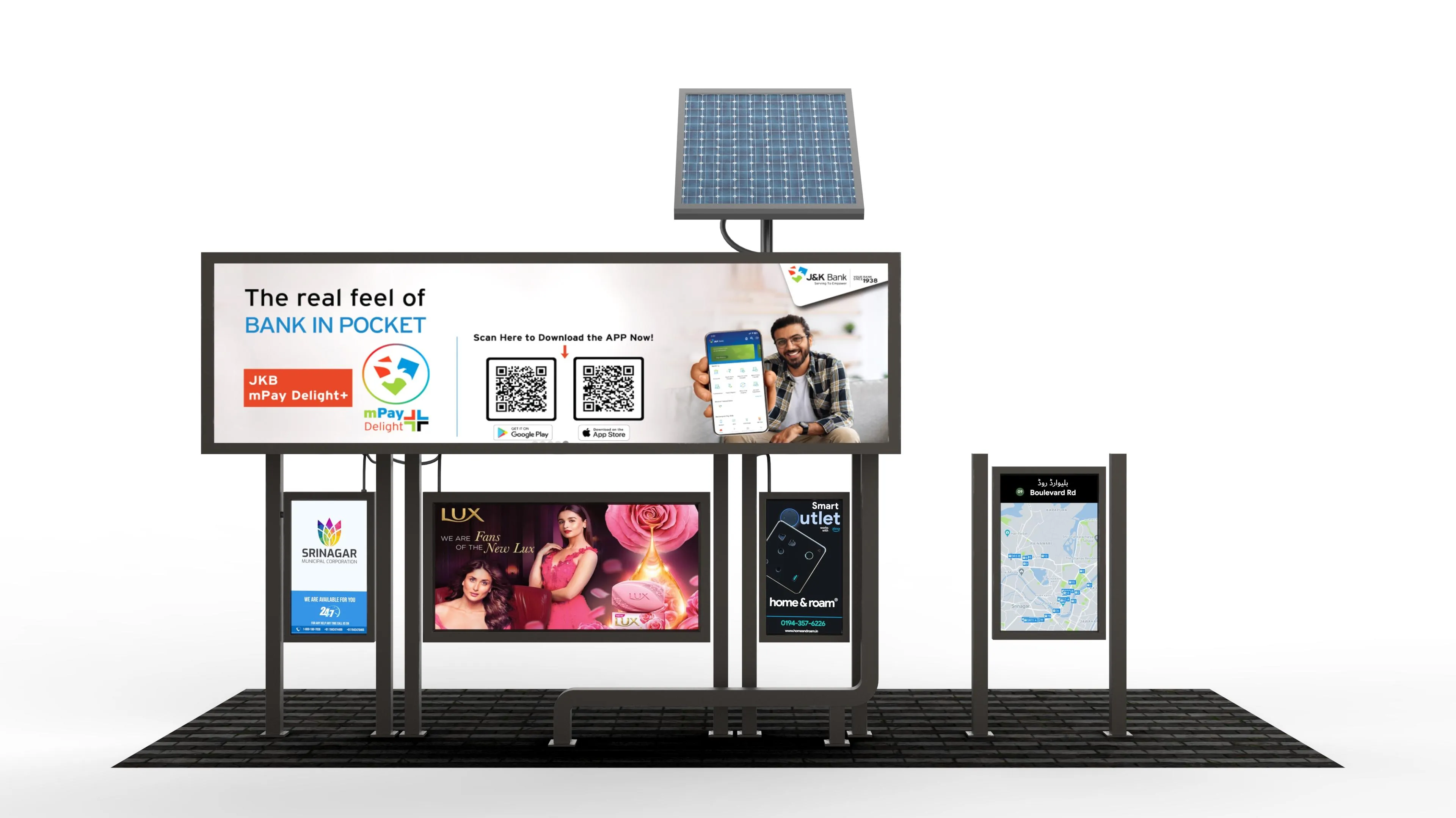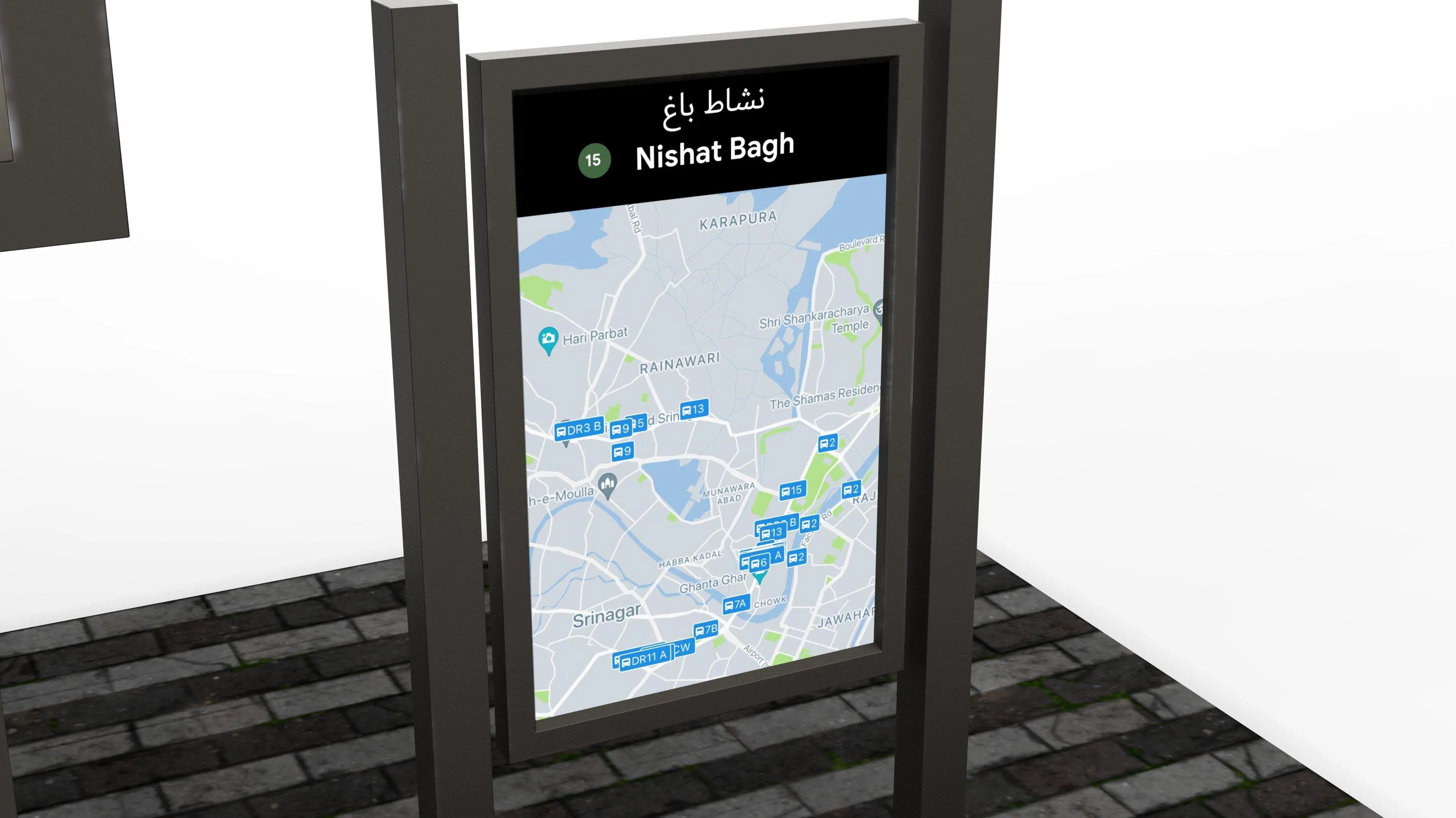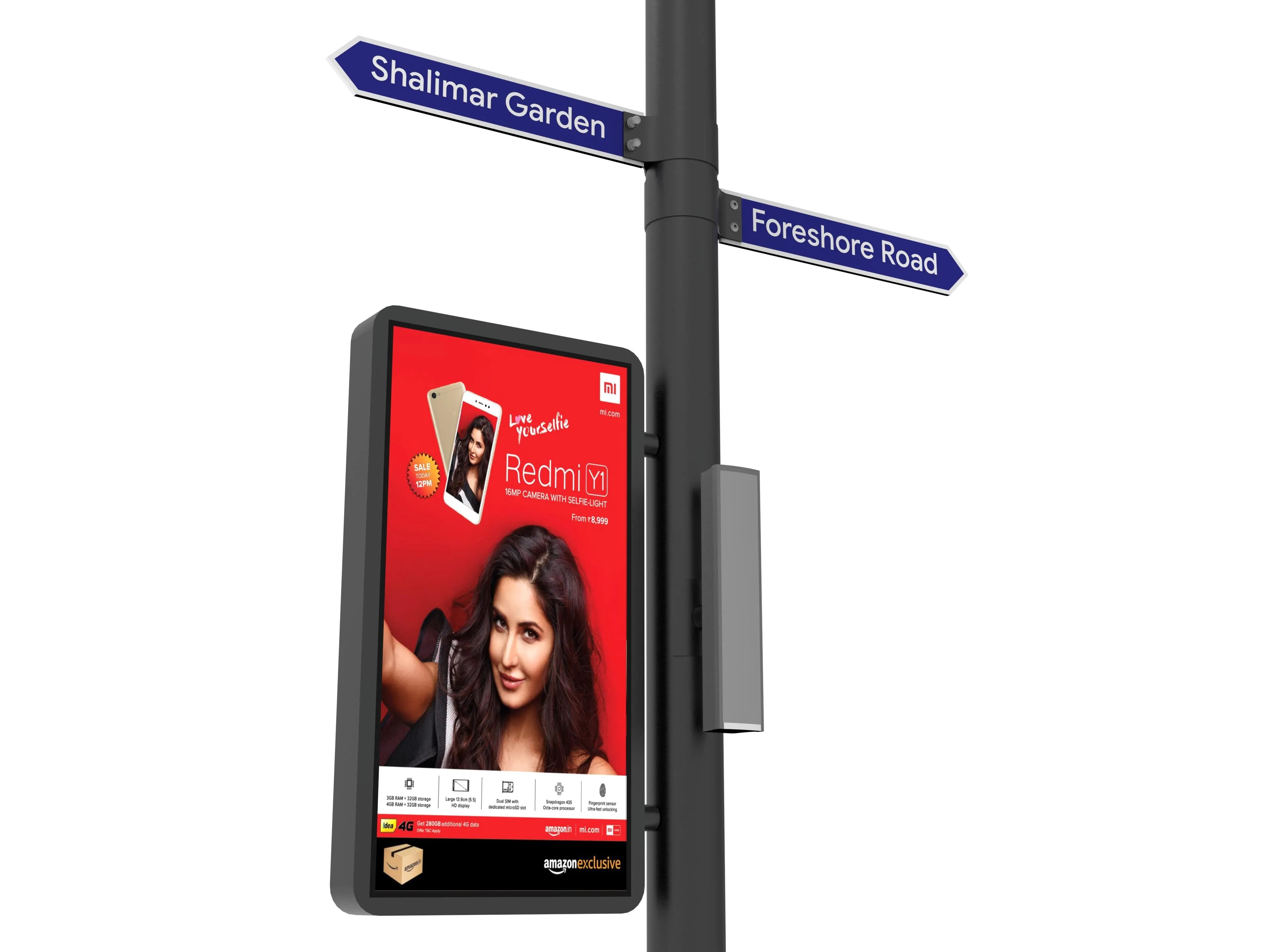


IoT-enabled
Smart poles come equipped with solar-powered LED lights and IoT sensors that provide real-time data on traffic, air quality, and environmental conditions, enhancing urban management, promoting sustainability, and improving public safety.
Smart Solar LED Lights are an innovative solution that can be customized using various protocols such as NB-IoT and LTE-M.One of the standout features of these lights is that in case of a light malfunction, a ticket is generated and instantly assigned to the concerned technical team in the corresponding zone. As a result, the lights can be repaired promptly and effectively, minimizing any disruptions and enhancing their overall dependability.
This innovative module is designed to be compatible with retro-style street lights, allowing them to be upgraded with smart technology. This means that the street lights can be remotely monitored and controlled, and can adjust their brightness based on the time of day or traffic flow.
This innovative product combines lighting and surveillance into one integrated system, providing a comprehensive solution for public safety,it includes the option to install a dome PTZ camera for added security. By integrating a camera into the light fixture, the Light+Surveillance system can capture high-quality footage of any activity in the area.
Harnessing IoT for Seamless Municipal Advertising
Unveiling the IoT-Powered Solution At the heart of this revolution lies the Internet of Things (IoT), a constellation of interconnected devices and sensors that, when integrated into municipal advertising, presents an array of transformative possibilities:
Unified Connectivity Infrastructure IoT lays the groundwork for a unified connectivity infrastructure. By interlinking disparate advertising mediums—be it digital billboards, mobile apps, or public announcement systems—municipalities can create a seamless network, ensuring consistent and synchronized messaging across multiple platforms.
Data-Driven Decision-Making Harnessing IoT sensors embedded within urban spaces enables municipalities to gather real-time data on foot traffic, user engagement, and audience demographics. This wealth of information empowers decision-makers to craft targeted and data-driven advertising strategies, optimizing reach and resonance.
Smart Resource Allocation Through IoT-enabled analytics, municipalities gain insights into the effectiveness of their advertising campaigns. This knowledge facilitates smarter resource allocation, allowing for precise budget distribution and the elimination of redundant efforts, thereby maximizing the impact of each advertising initiative.
Enhanced Citizen Interaction IoT-fueled systems create interactive opportunities for citizens. For instance, smart kiosks , mobile apps or IoT Street LED with an integrated advertising panel powered by IoT technology can provide real-time information about local events, transportation updates, or emergency notifications, fostering deeper citizen engagement and satisfaction.
Our experienced team of technicians and engineers is equipped to provide prompt and efficient AMC services to government and non-government organizations, helping them minimize disruptions to their operations.

In an IoT-enabled smart city, a consolidated dashboard serves as a unified interface presenting real-time data streams from various IoT sensors and devices deployed across the city. It offers city administrators and stakeholders a comprehensive view of urban infrastructure, including traffic flow, energy consumption, environmental data, and public services, facilitating informed decision-making and efficient resource management.
IoT sensors embedded in critical infrastructure components constantly monitor their operational status. When anomalies or faults occur—such as malfunctioning traffic signals or utility disruptions—these sensors promptly generate fault notifications. This enables immediate identification and resolution of issues, ensuring uninterrupted city services and infrastructure functionality.
Through IoT-driven systems, incoming fault notifications or service requests are automatically categorized and assigned to relevant maintenance or service teams based on predefined criteria. This automated ticket assigning streamlines response times and resource allocation, ensuring that identified issues are addressed promptly by the appropriate personnel.
In an IoT-powered smart city, inductive control involves the utilization of machine learning algorithms and data analytics to anticipate and proactively respond to changes in urban systems. By analyzing patterns from IoT sensor data—like traffic flow, energy demand, or waste management—cities can optimize operations, predict future needs, and adjust services dynamically for efficient resource allocation.
Within a smart city framework, energy independence refers to leveraging IoT-connected renewable energy sources, such as solar panels or wind turbines, to generate sustainable power for city operations. IoT technology monitors and optimizes energy production and distribution, reducing reliance on traditional, non-renewable energy sources and promoting a greener, more self-sufficient urban environment.
IoT-enabled remote management allows city officials and administrators to monitor and control various urban systems and services from a centralized location using connected devices. This capability enables remote adjustments and interventions in infrastructure, traffic control, public services, and utilities, enhancing operational efficiency and responsiveness without requiring physical presence at each location.